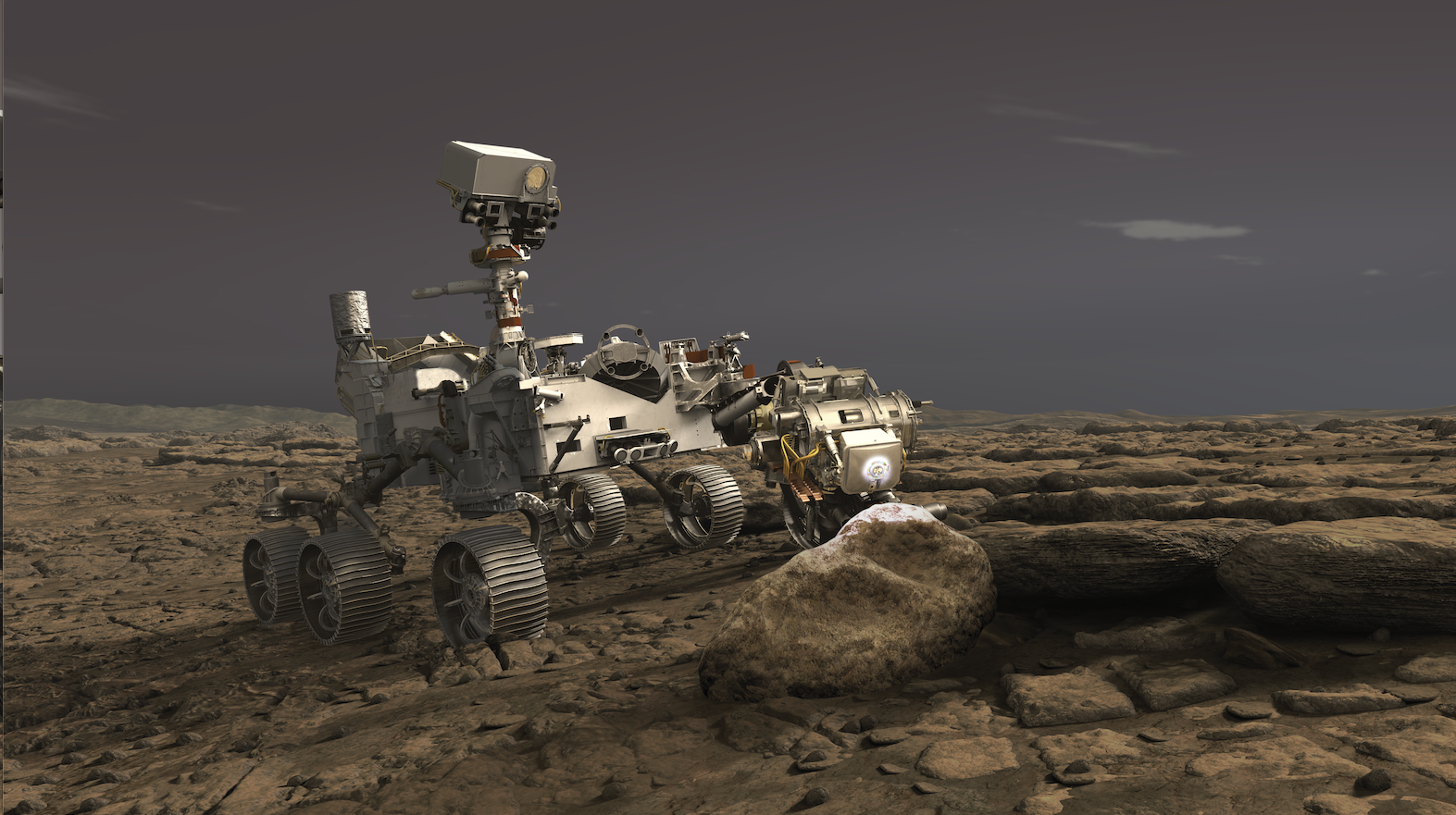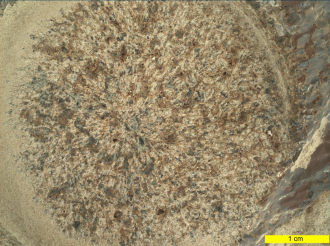Media release
From: Queensland University of Technology (QUT)QUT researchers on NASA’s Perseverance rover mission are part of the team that has collected the first datable Mars rock samples, providing a benchmark for mapping the history, evolution, and changing climate of the Red Planet.
Published in Science, the NASA-led team discovered olivine cumulate – igneous rock – below the sedimentary delta in Jezero crater.
Long-term planner for the NASA Perseverance mission, Dr David Flannery from the QUT Faculty of Science and QUT Planetary Surface Exploration research group was an author on papers documenting the discovery.
He said the discovery would allow researchers to date the samples that NASA wants to bring back to Earth - providing a better understanding of warmer and wetter climatic periods in Mars’ past and any evidence for past life that may be discovered by the mission.
“It was a surprise that we didn’t find sedimentary rocks on the crater floor, but also ideal because finding a datable igneous sample was one of the main mission goals,” Dr Flannery said.
“Ancient igneous rocks will allow us to date a several billion-year-old rock with very high precision. This will provide important timing and duration constraints on the history of Jezero crater and its surrounding region.
“So effectively, we landed on exactly the thing we needed to help us with one of our other main goals, which is to find evidence of past life.
“If we find that this lake was a habitable environment, for example, we will have an age constraint on when it was habitable.”
Dr Flannery said that on Earth, reactions of igneous rocks with water produce diverse habitats for microbial life and rocks on the Jezero crater floor appear to share the same characteristics, with the potential to record biosignatures of ancient habitats.
He said the olivine sample was identified by its composition and mineralogy, including diffraction peaks – a fingerprint of crystal orientation – and that QUT-NASA developed technology, software, and expertise were integral to the discovery.
The Planetary Instrument for X-ray Lithochemistry (PIXL) aboard the Perseverance Rover led by QUT alumna Dr Abigail Allwood at the NASA Jet Propulsion Laboratory (JPL) was developed by a team of engineers and scientists from nine institutions across three continents.
“PIXL observations were critical to proving the rock was an olivine cumulate and not just a sedimentary rock with the same composition,” Dr Allwood said.
“The PIXL team used the maps of fluorescence and diffraction of X-rays to prove that the rock formed by cooling of a melt.
“This kind of definitive observation is rare in planetary science. Usually, it’s easier to add more alternative hypotheses than it is to be able to absolutely refute any hypothesis with confidence.”
The PIXLISE visualisation software used to identify materials on the Mars surface was developed for JPL by QUT Planetary Surface Exploration research group programmer Peter Nemere.
Algorithms to allow PIXL team scientists to map the X-ray diffraction data were developed in collaboration by QUT and JPL, and proved the igneous rock formed by cooling of a melt.
“Our working hypothesis was that we were at the bottom of a lake because sedimentary features viewed from orbit suggested the crater was under water at some point in the past,” Dr Flannery said.
“Now we know we’re looking at olivine which, on Earth, would be pushed towards the surface from the mantle through tectonic processes – volcanos and lava flows.
“This discovery is hugely important because these types of rocks can be dated with radiometric techniques, the same techniques that we use on Earth to date very old rocks.”
The papers are two in a series released by Science in its family of journals and include a further two papers that focus on instrumentation in Science Advances. Lead authors on the first and second Science papers respectively were Perseverance’s project scientist, Professor Ken Farley from Caltech and Dr Yang Liu from the NASA JPL.
In the second study, discovery of olivine inside the crater helped solve a long-standing mystery of an olivine-rich outcrop spanning 70,000 square kilometres from the inside edge of Jezero into the surrounding region.
The olivine is said to resemble Martian meteorites found on Earth and was discovered after creating an abrasion patch – grinding away the surface material – in preparation for studying rocks.
Due to the large crystal size and uniform composition that requires a very slow cooling environment, the likely theory is that magma in Jezero did not erupt to the surface but formed underground before being exposed over time by erosion.
The Mars Perseverance mission is planning to cache about 30 rock samples for return to Earth. Last month, NASA announced it had finished its review of system requirements for the Mars Sample Return Program.
With planned launch dates for the Earth Return Orbiter and Sample Retrieval Lander in 2027 and 2028, respectively, the samples are expected to arrive on Earth in 2033.
Dr Flannery said that in the distant past Earth and Mars may both have had habitable environments.
“Mars is another example of how things can pan out, and things did pan out quite differently, Dr Flannery said.
“It sort of died off geologically. It doesn't have plate tectonics anymore, for example. And climate change has led to the cold and dry conditions that we have on the surface today.
“Being able to date these old rocks on Mars allows us to unravel its history.
“Studying Mars helps us put the Earth in context and gives us a mirror to better understand how our planet might be special.”
QUT researchers working with NASA on the latest discoveries included Dr Flannery, his PhD student Brendan Orenstein and co-supervisor, synchrotron specialist, Dr Michael Jones from the QUT Centre Analytic Research Facility and QUT Centre for Materials Science, programmer Peter Nemere, geochemist Professor Balz Kamber and geologist Dr Luke Nothdurft from the QUT School of Earth and Atmospheric Sciences.
Embargoed Science family journal papers are downloadable pre-embargo for reporters at the Science Press Package online or by contacting scipak@aaas.org:
- Article #abo2196: 10.1126/science.abo2196 - Aqueously altered igneous rocks sampled on the floor of Jezero crater, Mars.
- Article #abo2756: 10.1126/science.abo2756 - An olivine cumulate outcrop on the floor of Jezero crater, Mars.





